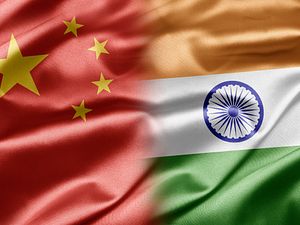On Oct. 23, Indian Prime Minister Manmohan Singh met with Chinese Premier Li Keqiang, with the two leaders concluding and signing a Border Defence Cooperation Agreement (BDCA) aimed at maintaining peace along the Line of Actual Control (LoAC), which was established in 1993. The momentum leading up to this agreement was largely generated by the incursion of a Chinese platoon into Indian territory in April 2013, known as the Daulat Beg Oldi incident. The incident was one of the most serious border incidents between India and China in recent history.
The ten-article agreement enumerates several mechanisms to reduce misunderstandings and improve communications between the two nuclear-armed states along their disputed border in Kashmir. According to Reuters, “Under the new deal, the two sides will give notice of patrols along the ill-defined border to ensure that patrols do not “tail” each other to reduce the chance of confrontation and exercise “maximum self-restraint” should the two sides come face to face in areas where the line of control is unclear.”
The agreement was expected to include a direct hotline between the Chinese and Indian Ministers of Defense, but Article IV states that this is something that the “two sides may also consider,” in addition to the lower-level communication exchanges. Both sides continue to increase their military presence along the contested border.
Reading the text of the article from Article VI onwards, it becomes apparent that the BDCA does little to lessen the probability of misperception regarding the LoAC. Article VI explicitly prohibits one side from actively following or tailing the patrols of another side, as was the case in April. Articles VI, VII, and VIII each explicitly outline procedures for resolving disputes in “areas where there is no common understanding of the line of actual control.” This serves to sow some doubt as to the utility of the 1993 agreement. During the course of the Daulat Beg Oldi incident, China never acknowledged that it had entered Indian territory. With the BDCA, the Chinese would have been able to cite a lack of common understanding. The improved means of communication between both sides will reduce the chances of an accidental incursion, but if China chooses to deliberately provoke India, it may have a stronger basis on which to do so.
Ahead of Singh’s visit to China, I wrote a rather critical piece for The Diplomat where I argued that the manner in which India resolved the crisis was strategically unwise. Other commentators have argued instead that Indian strategy towards China has been more nuanced than might appear at first glance. The BDCA might do little in reality to reduce the chances of a border skirmish between India and China along the LoAC, but on balance, the agreement seems to be in India’s interest. It ensures that in the case of an egregious incursion, such as the Daulat Beg Oldi, there exists a set of bilaterally-agreed-upon rules to diffuse the situation.
In remarks following his meeting with Li, Singh remarked that “peace and tranquility on our borders must remain the foundation for growth in the India-China relationship, even as we move forward the negotiations towards a fair, reasonable and mutually acceptable settlement to the India-China Boundary Question. This will be our strategic benchmark.” This language is refreshingly assertive and demonstrates an acknowledgement of the criticism that has been levied against him and his government for ignoring China’s provocations in the interest of preserving commercial ties.
Singh’s signing of the BDCA with China will be an important piece of his foreign policy legacy. Opposition prime ministerial candidate, Narendra Modi has been a vocal critic of what he perceives as weakness in India’s defense posture against China. Should Modi win next year’s election, it is likely that the Indian side of the LoAC will see increased militarization. The BDCA, however imperfect, provides a prudent buffer against unwarranted escalation in the case of a LoAC violation in the future.

































